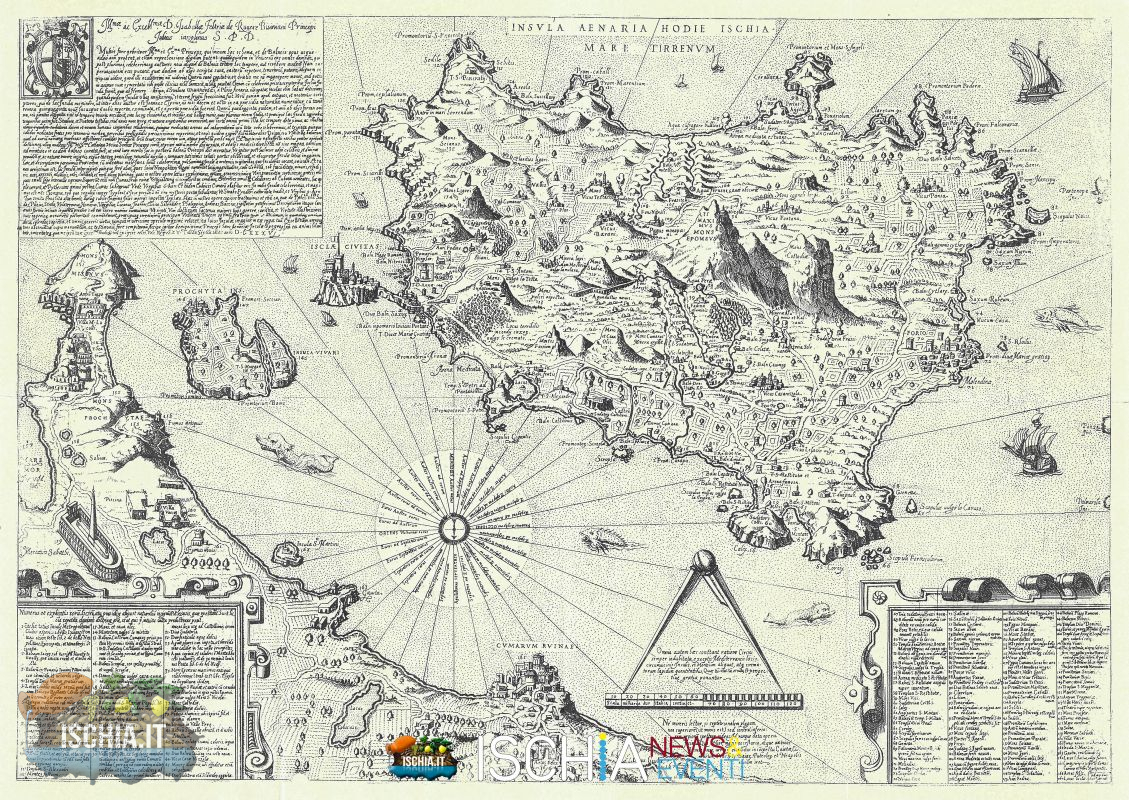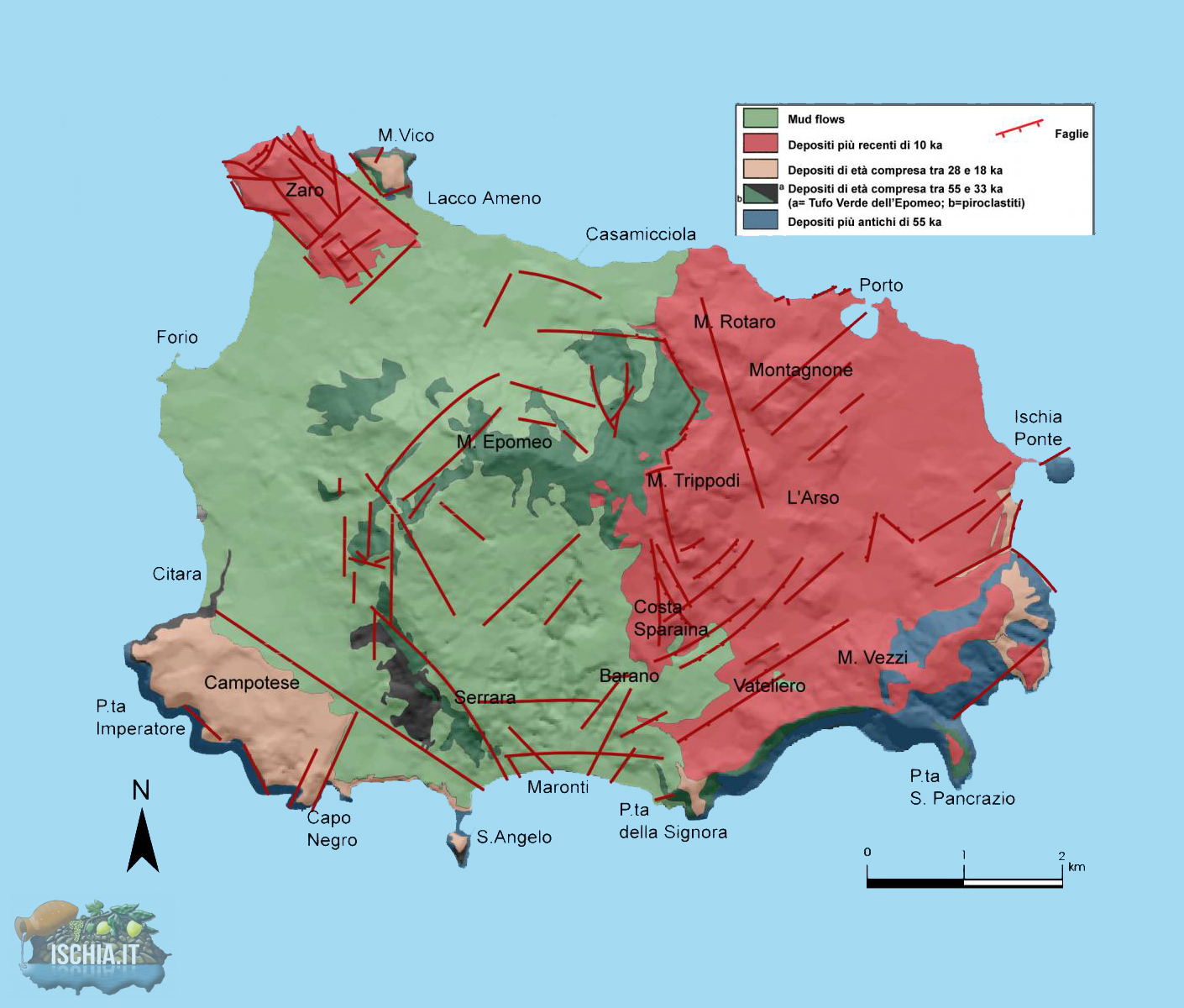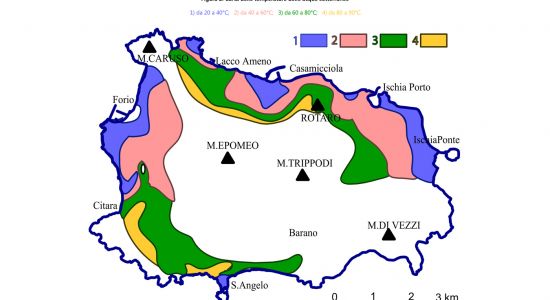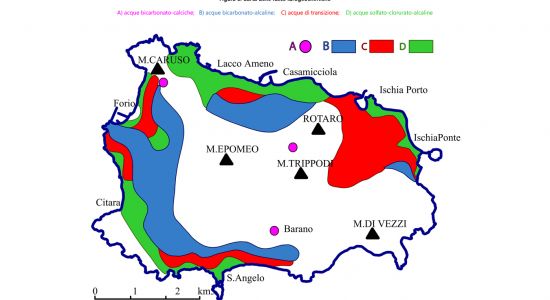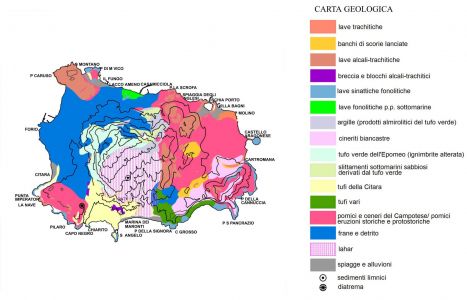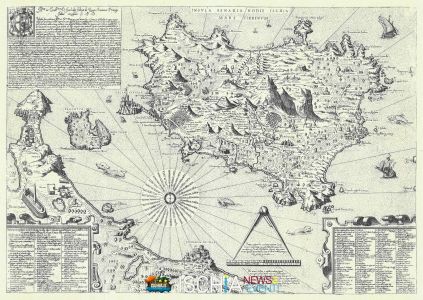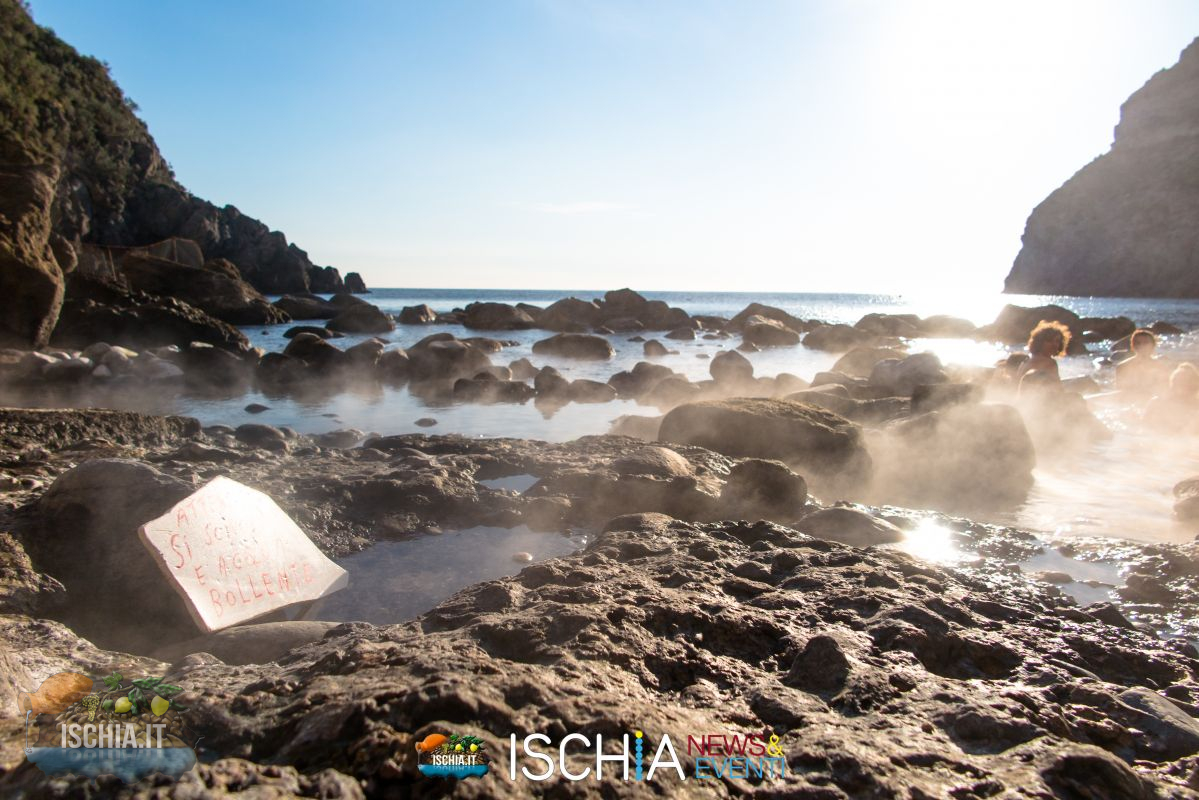Why choose Ischia to look after you health?
The island of Ischia is not only rich in thermal springs with numerous therapeutic virtues, it also boasts a fortunate geographic position which guarantees ideal climatic and environmental conditions for restoring the body and the spirit on the entire island: the rocky cliffs of Epomeo, the vineyard cultivation on the gently rolling hills, the relaxing pine groves, the fresh sea breeze, the beaches and the abundance of suggestive panoramas make the ancient land of Inarime a sweet, enchanted garden where one can enjoy the benefits of the springs of eternal youth.
The thermal waters of the island of Ischia have been famous and used since olden times. As shown by the numerous archaeological findings discovered on the site of Pithecusa and conserved at the Archaeological Museum of Villa Arbusto in Lacco Ameno, the first Euboean colonists, (VIII century B.C.), appreciated and used the thermal spring waters of Ischia.
In fact, the Greeks used the thermal waters to strengthen the spirit and the body and as a remedy for the consequences of war wounds, (in the pre-antibiotic era), attributing supernatural powers to the waters and vapours that gushed out of the earth; it was not by coincidence that temples dedicated to divinities, such as the one dedicated to Apollo at Delfi, could be found at each thermal resort. Strabone, the Greek historian and geographer cites the Island of Ischia and the virtues of its thermal springs in his monumental geographic work (Geograph. Book V).
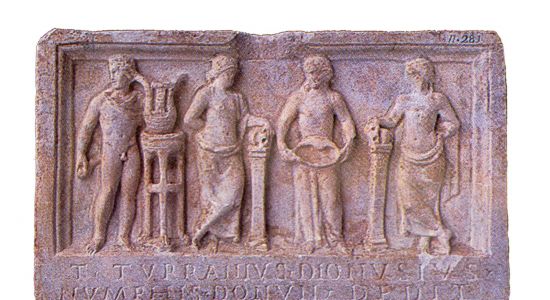 Votive tablet from the Roman periodIf the Greeks were the first to discover the power of thermal waters, the Romans exalted them as a curing and relaxing instrument through the creation of public Thermae and by using the numerous island springs safely and profitably and without any ostentatious ceremonies (as shown in the votive tablets found at the Spring of Nitrodi at Barano d'Ischia, where a small temple was dedicated to Apollo and the nymph Nitrodie, guardians of the waters);
Votive tablet from the Roman periodIf the Greeks were the first to discover the power of thermal waters, the Romans exalted them as a curing and relaxing instrument through the creation of public Thermae and by using the numerous island springs safely and profitably and without any ostentatious ceremonies (as shown in the votive tablets found at the Spring of Nitrodi at Barano d'Ischia, where a small temple was dedicated to Apollo and the nymph Nitrodie, guardians of the waters);
in fact, unlike the case for Rome and other ancient thermal centres, no impressive traces of thermal establishments were found on the Island probably due to the volcanic eruptions and the earthquakes that frequently shook the island's cliffs.
The decline of Roman power coincided with the abandonment of the use of the balnea, even on Ischia: in fact there are no traces that show the waters were used during the Middle Ages. During the Renaissance period thermae and thermalism became popular once more and a Calabrian doctor, Giulio Iasolino, who was also a lecturer at the University of Naples, gave a decisive impulse to modern medicine in 1500 when, fascinated with the climate and phenomena of secondary volcanism (fumaroles and thermal waters) and sensing the therapeutic potential of the thermae,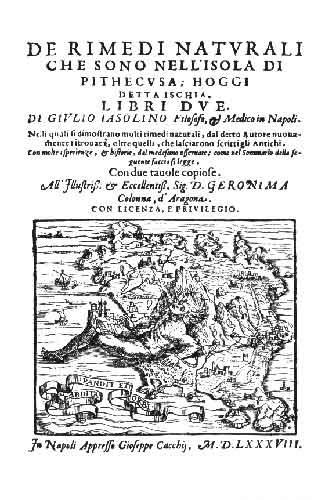 Frontispiece of the treatise by Professor Giulio Iasolino he carried out a meticulous census of the Island springs (the hydro-geological wealth of the island territory appeared in print for the first time.
Frontispiece of the treatise by Professor Giulio Iasolino he carried out a meticulous census of the Island springs (the hydro-geological wealth of the island territory appeared in print for the first time.
He identified the composition of the waters and made detailed observations of the effect of the same on numerous pathologies that afflicted his contemporaries (in describing the Spring of Castiglione, one of the most famous at the time, Iasolino expressed all his enthusiasm for the thermal waters: "Every day we see the effects and virtues of these waters, which are so marvellous and wonderful they must surely be a gift from heaven sent to cure men's health"). With the publication of the treatise "De Rimedi Naturali che sono nell'Isola di Pithecusa; hoggi detta Ischia" (Natural Remedies on the Island of Pithecusa; known today as Ischia), Professor Iasolino freed Ischia's thermal waters from that magical aura that had conditioned their use until then.
After, Iasolino's experience at the beginning of the 17th century, considering that many recoveries were obtained through thermal baths and that the treatments at Ischia, which were considerably expensive, could only be afforded by nobles or rich middle-class people, a group of noble Neapolitan philanthropists established the "Pio Monte della Misericordia" in the commune of Casamicciola, a thermal spa considered to be the largest in Europe at the time, so that the therapeutic qualities of the local thermal waters could also be enjoyed by people who did not have adequate economic possibilities. From the 17th to the middle of the 20th century numerous establishments and accommodation facilities were built near the most famous thermal springs. Thanks to this, the island of Ischia became a famous international treatment and lodging resort where famous people such as Giuseppe Garibaldi, after the battle of Aspermont, Camillo Benso, Count of Cavour and Arturo Toscanini came to cure the illnesses of the body, among other things. Thanks to the farsightedness and the entrepreneurial insight of cav. Angelo Rizzoli, from the sixties onwards the Island of Ischia and its waters opened up to the large flow of tourists and an intense scientific activity consecrated thermal cures to the level of alternative therapies to pharmacological ones for curing many of the diseases already perfectly described by Iasolino.


